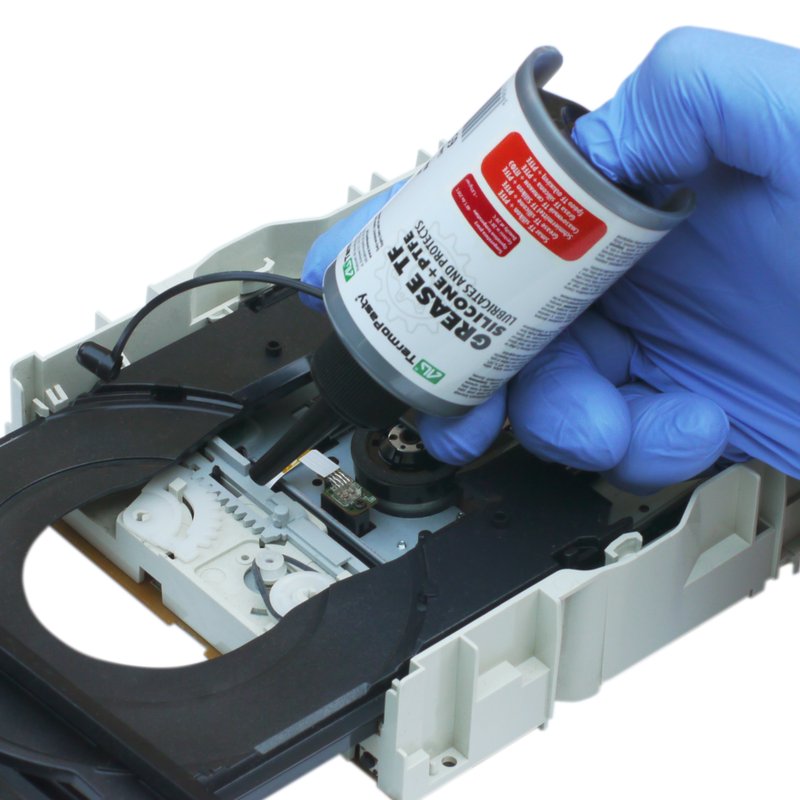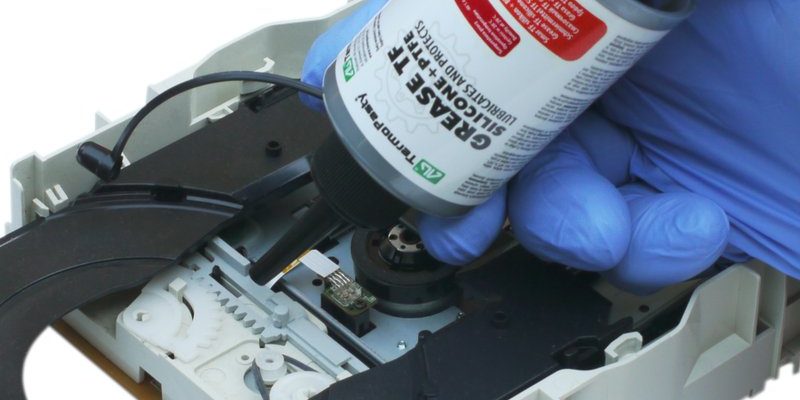
Different handleset lever mechanisms have their own quirks and sensitivities. Use the wrong lubricant, and you might gum up the action—or even void your warranty. It’s a lot like cooking: olive oil might be perfect for salad, but you’d never use it to grease a car engine. So when it comes to keeping entry door levers (especially from brands like Baldwin, Emtek, or Defiant) in prime shape, knowing the best lubricants for each type of mechanism can save you time, money, and a whole lot of wiggling.
Let’s break down exactly *which* lubricants to use for *which* handleset levers, why it matters, and how to apply them for smooth, reliable operation—without risking sticky messes or future repairs.
Why The Right Lubricant Matters For Handleset Levers
Here’s the thing: handleset lever mechanisms are actually small machines built into your door. They’ve got moving cams, springs, and latches that need to slide and rotate with as little friction as possible. When dust, pet hair, or old grease gets inside, those parts start fighting each other—leading to stiff movement, squeaks, or even lock failures.
You might be tempted to just grab a can of whatever’s in the garage, but not all lubricants play nice with door hardware. Some spray oils leave sticky residues that attract more dirt. Others can break down plastic washers or rubber o-rings inside the mechanism. Over time, the wrong product can do more harm than good—think seizing up just when you’re late for work.
That’s why most major brands—like Schlage, Weiser, and Yale—actually *recommend* specific types of lubricants for their lever sets. Choosing the right stuff isn’t just about a slick feel; it’s about protecting intricate parts and making sure you don’t have to “reset” or even replace the whole handleset down the line.
Types of Lever Mechanisms: What’s Inside Your Handleset?
Not all lever-style door handles work the same way, and that plays a big part in which lubricant is best. Some entry levers use simple spindle-and-cam mechanisms, while others incorporate more advanced code locks, pair with smart home systems, or have spring-loaded returns for self-centering.
- Mechanical levers: These are basic levers with a spindle, latch, and maybe a return spring. They’re found in most residential doors—Kwikset and Defiant are popular brands here.
- Smart or electronic levers: These use internal electronics and may have extra plastic gears or battery compartments (think Schlage keypad or Yale Assure series).
- Mortise leversets: Higher-end handles, like those from Baldwin or Emtek, often use a mortise lockbox with complicated internal parts.
Honestly, it’s a little like the difference between an old-school bike and a fancy e-bike—what’s under the hood really matters. Each of these has its own ideal lubricants based on material, exposure, and risk of damage.
Dry Lubricants: The Go-To For Most Mechanical Levers
If you’re dealing with a standard, analog lever without any electronic components, dry lubricants—especially silicone or graphite-based sprays—are usually the safest, most effective choice. Here’s why.
Dry lubricants create an ultra-thin layer that helps metal slide against metal but doesn’t leave a sticky residue behind. They won’t attract dust or grime, so the inside of your mechanism stays cleaner for longer. Honestly, if you live in a dusty area, this makes a huge difference compared to oils or greases.
Most pros will tell you: graphite powder is great for older locks, while a silicone spray (look for “dry” or “non-oily” types) works wonders on modern levers. Just a quick puff or spritz inside the keyway or latch mechanism is all you need. Brands like Tri-Flow and 3-IN-ONE Dry Lube get top marks because they don’t gum up or risk damaging plastic internals.
Always avoid WD-40 for lever handles—it’s not actually a lubricant, and over time, it leaves behind a residue that can jam up moving parts.
Wet Lubricants: When To Use Oils and Greases
Here’s where things get a bit technical. Some handleset lever mechanisms—especially high-traffic commercial doors or mortise locksets—benefit from a touch of wet lubricant, but only if *specifically recommended by the manufacturer*.
Teflon-based oils or lithium greases are sometimes used for heavy-duty interiors. These create a thicker barrier for metal-on-metal parts, especially inside bigger mortise locks (Baldwin, Emtek commercial lines). But be careful: too much oil attracts dust like a magnet, and some greases can eat away at plastic spacers or bushings.
If you go this route, less is more. Apply a tiny drop to the main latch bar or cam—never oversaturate—and wipe away any excess. And always double-check your handleset brand’s manual. Using the wrong oil *can* void warranties, especially on modern Schlage or Weiser levers that use plastic or coded reset mechanisms.
Smart, Electronic, and Keypad Handles: Special Lubricant Needs
With the rise of smart home tech, lots of door handles now pair with electronic locks or battery-powered keypads. It’s cool, but it raises new questions about maintenance and what lubricants are safe.
These mechanisms often have fragile plastic or even circuit boards right inside the casing. Honestly, one blast of the wrong aerosol can end in an expensive sync or reset headache. For these, dry silicone spray is usually the only recommended option. *Never* use graphite powder (which can cause shorts), and steer clear of any liquid oils.
What if your keypad is sticking or the lever isn’t springing back right? Try gently removing the lever, dusting the moving parts, then spraying a tiny amount of dry silicone on the metal pivot (not on wires or battery terminals). Reassemble and test—make sure all codes and pair functions remain intact. Problems with sticking usually mean debris, not a lack of lubrication.
For smart levers, always disconnect the battery before applying any lubricant. It’s a safety thing—trust me.
How To Properly Lubricate Your Handleset Lever
Let me explain the process, because a good lubricant won’t help if you rush the job or apply it in the wrong spot. Start by identifying *where* friction actually happens: typically inside the latch, at the cam, and on the return spring. Don’t just flood the whole handle.
Here’s a beginner-friendly breakdown:
- Remove the lever or escutcheon. Use a screwdriver or pin tool, following your brand’s instructions (Schlage, Kwikset, etc.).
- Dust and clean out debris. Wipe with a dry cloth, and use canned air for tight spots.
- Apply lubricant sparingly. One spray or puff on metal parts is enough—don’t soak it. Avoid wires or electronic parts!
- Reassemble and test. Cycle the lever, code, or lock several times to spread the lubricant evenly.
- Wipe excess. Any dripping or pooling means you’ve used too much—wipe away to prevent buildup.
Taking a couple of extra minutes here can save you from weeks of sticky frustration or even the need to replace batteries or reset codes in smarter models.
Lesser-Known Issues: Lubricant Build-Up, Coded Levers, and Seasonal Changes
Most people only think about lubricating a handle when it *already* feels stiff. By then, there’s often a mix of old oil, pet hair, and dust making a mess inside. Here’s what can happen:
- Lubricant buildup: Repeated oiling without cleaning just layers on goo. Always clean, then lube.
- Coded or paired mechanisms: If your lever syncs with a remote or has a code function, oil can interfere with electronics. Go dry, or consult the manufacturer.
- Seasonal swelling: Door alignment can shift with humidity, and this sometimes feels like a mechanical problem. Don’t over-lubricate—sometimes, adjusting hinges is a better fix.
If you’ve tried everything and your handleset still sticks, consider whether there’s a deeper issue—like a worn spindle, dead battery, or a need for a reset or re-pair in your smart lock. Lubricant is a tool, not a cure-all.
Recommended Lubricants By Brand and Type: Quick Comparison Table
Let’s tie it all together with a quick-reference table for the best lubricants for specific handleset lever mechanisms. These are top picks for major brands and types:
| Handleset Type | Suggested Lubricant | Notes |
| Kiwkset, Defiant mechanical | Graphite powder or dry silicone spray | Great for dusty areas, minimal buildup |
| Schlage, Yale smart/electronic | Dry silicone spray only | Avoid graphite and liquid oils |
| Baldwin, Emtek mortise | Teflon-based oil (sparingly), sometimes lithium grease | Check manual; clean before reapplying |
| Generic/universal levers | Dry silicone spray or graphite powder | Spray into latch & cam area only |
Closing Thoughts: Smooth Operation Starts With The Right Lubricant
When it comes to keeping your handleset lever mechanisms working smoothly, a little knowledge goes a long way. Matching the right lubricant to your specific mechanism—whether it’s an old-school Kwikset, a sleek Schlage keypad, or a luxury Baldwin mortise set—isn’t just a matter of convenience. It’s about protecting the delicate parts inside, avoiding messy buildup, and keeping those satisfying, clicky lever pulls for years to come.
Don’t be afraid to take a few extra minutes to check your handleset brand’s recommendations or to clean before applying anything. Honestly, it’s a simple act of maintenance that pays off every single time you open your front door—no more sticky surprises, no more wobbly levers, just easy, reliable motion you barely have to think about. That’s the kind of everyday upgrade everyone can appreciate.
